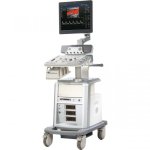
Neuroimaging Technique Identifies Patients at Risk for Alzheimer’s Disease in Healthy Brains
How the brain changes with age is not well-characterized and even less is known about the factors influencing the rate of brain aging. Brain imaging can offer a window into risk assessment into for diseases such as Alzheimer’s disease. A recent study demonstrated that genetic risk is expressed in the brains of even those who are healthy, but carry some risk for AD.
















